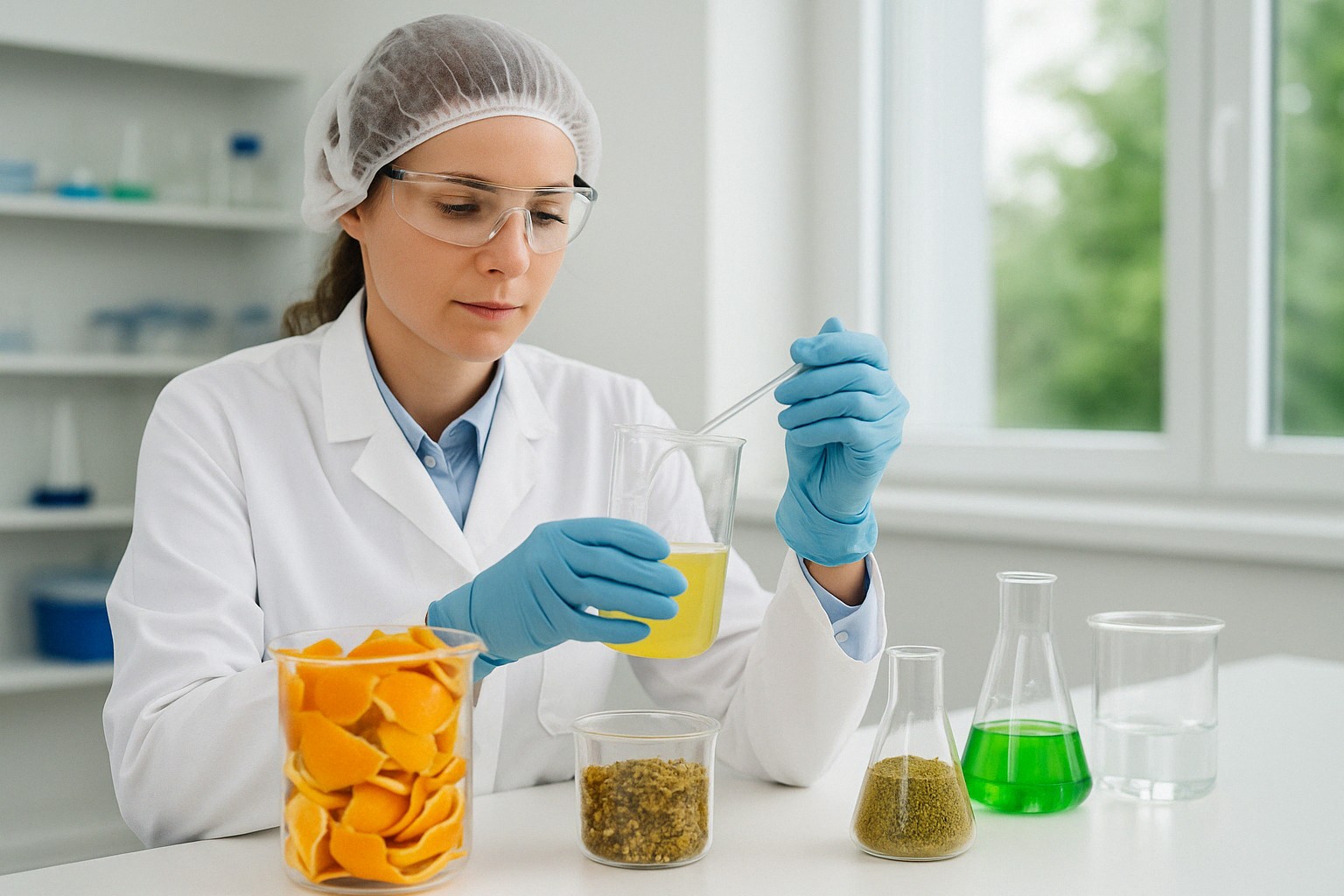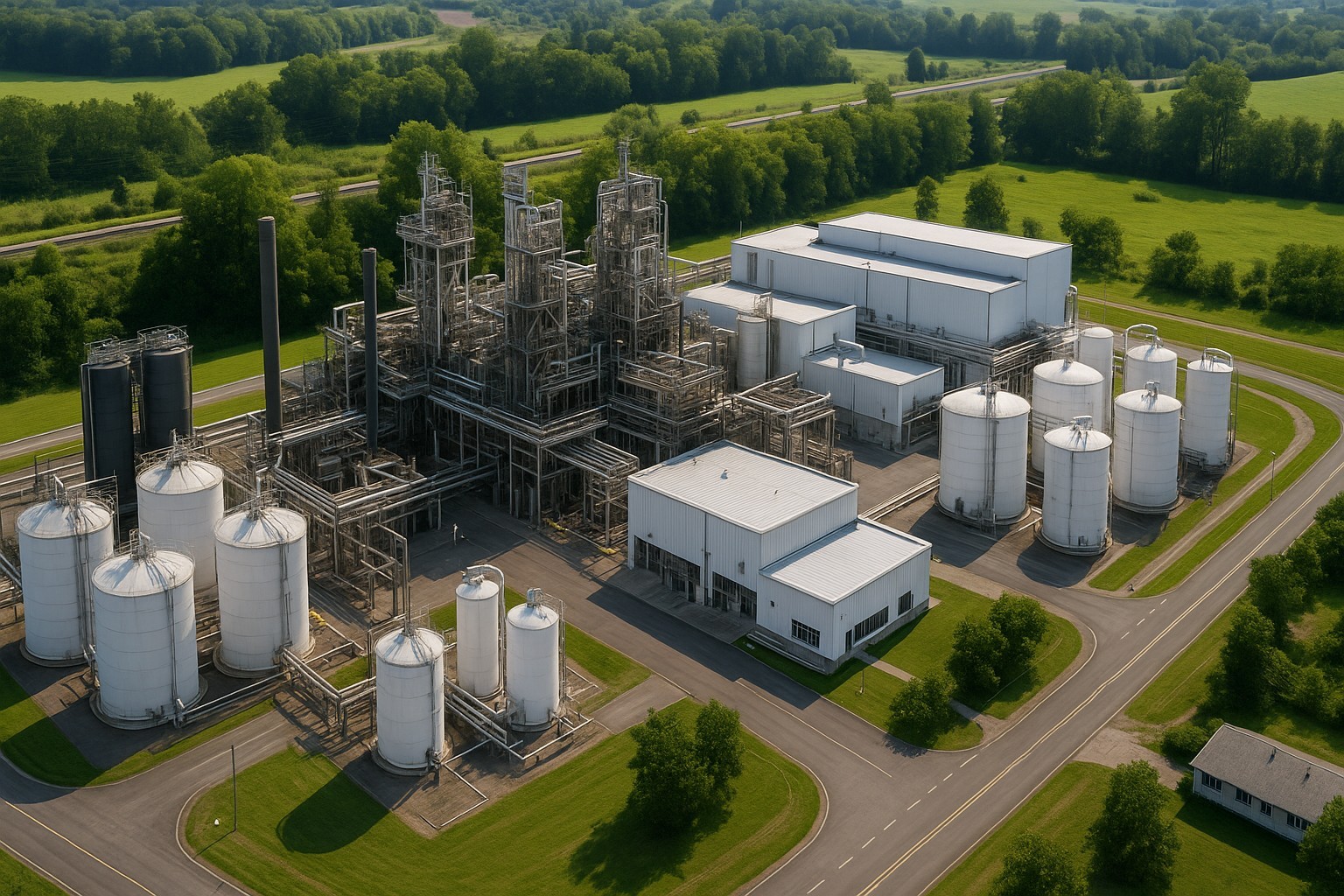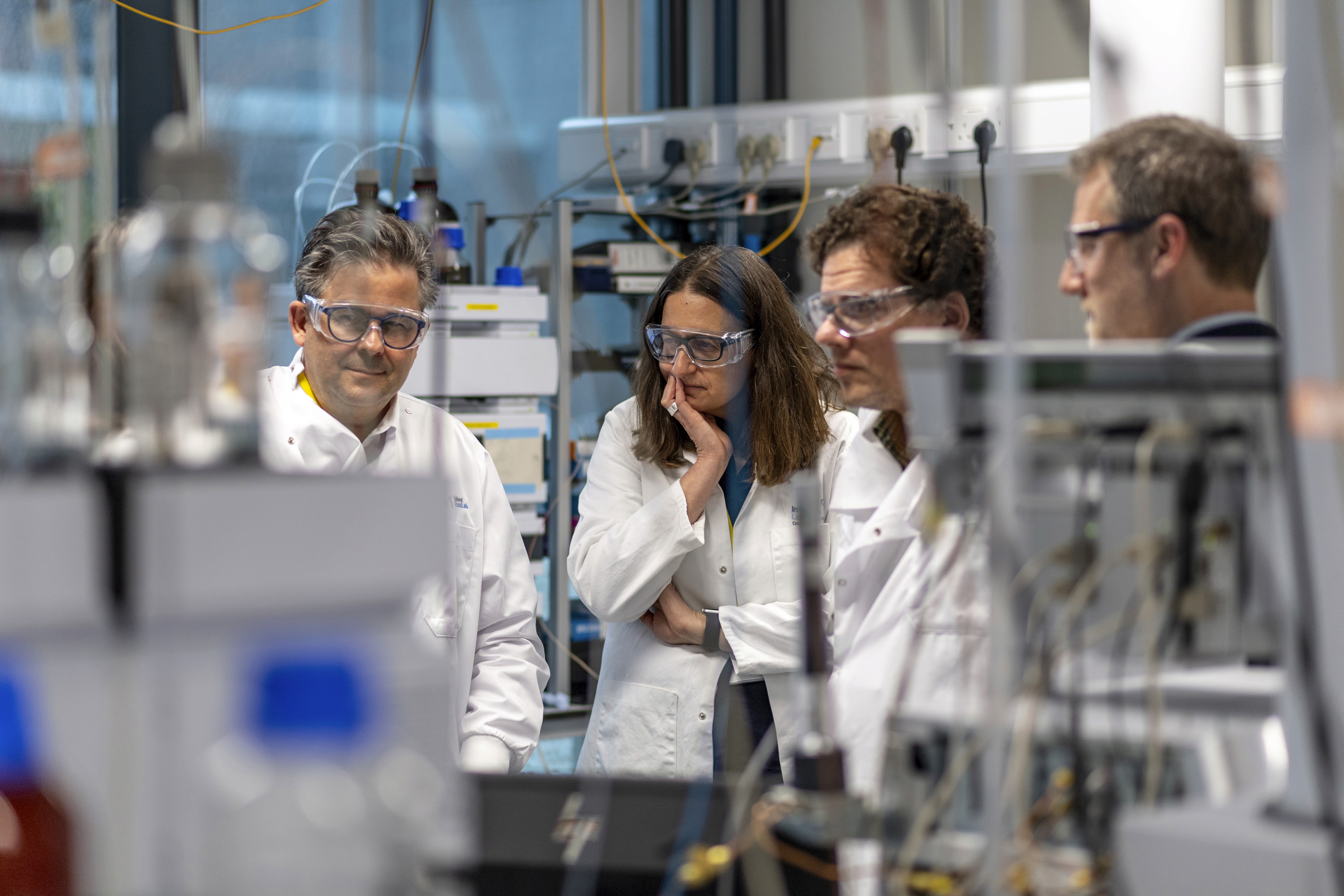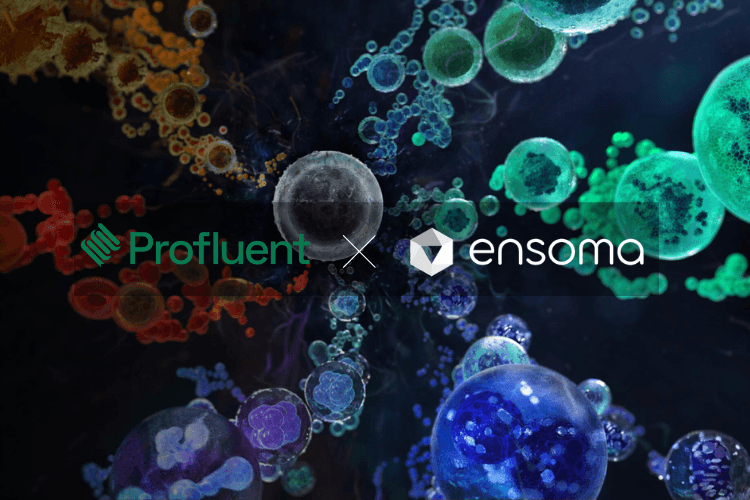Waste Not, Want Not: Synthetic Biology Helps Achieve Circular Chemistry
Synthetic biology is helping the chemicals industry reuse its waste, yet scale-up and process standardization challenges remain
Apr 22, 2025
[GPT-4o]
The chemicals industry has an environmental sustainability problem: the use of fossil fuel source materials and the insufficient use of the waste it produces. Synthetic biology can help in this context. Historically, the idea has been to use genetically engineered cells to break down renewable virgin source materials such as glucose into commodity chemicals such as sorbitol. Using waste feedstocks instead of virgin resources as the source materials would help bring about circular chemistry, minimizing resource use and waste. Furthermore, there are excellent opportunities to tap into the green chemicals market, estimated at 123 billion USD in 2024 and projected to reach 230 billion USD by 2030.
How are researchers and businesses using synthetic biology to meet the goals of circular chemistry? In a recent perspective article in RSC Sustainability, corresponding author Joanna Sadler, Chancellor’s Fellow in Biotechnology at the University of Edinburgh, and coworkers have laid out a compelling analysis. John Nicols, formerly CEO of Codexis and currently a consultant to biotech companies, and Yuji Suzuki, CEO of bitBiome, also shared insights with us.
John Nicols is the Chair of the Chemicals & Materials Track at SynBioBeta: The Global Synthetic Biology Conference, and will also be part of a panel discussion on “Infrastructure Investments for Accelerating the Bioeconomy.” Moreover, Yuji Suzuki will be presenting the latest data from bitBiome in a talk entitled “Enzymatic Intelligence: Catalyzing the Future with Data-Driven Synthetic Biology.”
Innovation vs. Legacy Practices: Business Barriers to Circular Chemistry
The McKinsey group recently reported that profits earned by the chemicals industry have not been competitive compared with the wider capital markets. Using synthetic biology to lower the cost of circular chemistry may be an innovative strategy to help correct this business state. Examples abound of using synthetic biology to produce commodity chemicals from waste. For example, bioprocessing can break down orange peels (the juice industry produces millions of tons of them every year) into D-glucose and D-galacturonic acid—and next into meso-galactaric acid for nylon, plastics, and other uses.

Yet according to Nicols, updating rigid, status-quo-driven business practices within the chemicals industry remains challenging: “Many chemical and biotech companies need help with change management and innovation. Consider Amyris, which declared bankruptcy in 2023. We should talk more about why there are so many billion-dollar biotech business failures. Furthermore, there are plenty of opportunities to help early-stage companies navigate sponsorship, which they may need more than capital.”
bitBiome is an example of a company that is overcoming common biotech business limitations. Suzuki shares some of their recent accomplishments: “bitBiome is accelerating the discovery and engineering of polyethylene terephthalate (PET)-degrading enzymes by combining the world’s largest microbial genome database (bit-GEM) with its proprietary artificial intelligence-powered enzyme design platform (bit-QED). We have already developed multiple enzymes with high selectivity for co-polymerized PET substrates. Future expansion is planned toward other polymers such as polyurethane. Currently, we are conducting joint feasibility studies with domestic partners to move toward semi-commercial demonstration projects.”
Shifting Sands and Insufficient Incentives: Process Challenges of Circular Chemistry
Despite the promise of using synthetic biology for circular chemistry in plastics up-cycling and analogous contexts, Sadler and coworkers propose that there are two main challenges. One main challenge is that although there may be greenhouse gas emission reductions compared with standard chemical processing and up-scaling of the waste, initial polymer pretreatment and depolymerization might use excessive solvents and energy.
Suzuki elaborates: “There is a need to balance selectivity and robustness in enzymes. Targeted activity for specific polymers must be paired with tolerance to impurities, additives, and colorants. Simplified pretreatment steps are also important. Designing conditions that allow enzymatic reactions to proceed under ambient temperature and aqueous conditions, without the need for energy-intensive heating or mechanical processing, is essential for cost reduction. We must also improve process compatibility through enzyme engineering. Enhancing traits such as pH tolerance or resistance to surfactants will be key for maintaining activity in complex mixed plastic environments.”

Sadler reports on solutions currently in development: “Catalytic chemical systems have shown exciting promise in depolymerization of mixed waste streams to generate a mixture of fermentable monomers. A few studies now show that biological systems can be engineered to funnel these into a single target chemical. I think there could also be huge promise in systems that can do this in the same reaction vessel as the up-cycling itself, either in a two- or single-step process. This is something we are working on at the moment, as a one-pot depolymerization and up-cycling process could offer significant cost and energy savings.”
The second main challenge faced in synthetic biology efforts is that mixed plastic and other impure waste stream inputs are more challenging than pure inputs. As Nicols explains: “The world hasn’t figured out yet how to collect and deal in plastic waste in a structured way; it’s a moving target. The reality is that most plastics aren’t recycled, and there’s a lot of missing infrastructure to correct this state of affairs. Using microbes or enzymes to help with plastic recycling remains difficult, yet some biotech companies have made good progress using such biological products to degrade PET. But different solutions will be needed to degrade other plastics, like polyolefins and thermosets. Finding a global solution may require an international consortium.”
It’s so difficult to produce valuable commodity chemicals from mixed plastic waste that positive results are major news, such as using engineered Pseudomonas putida to produce either β-ketoadipate or polyhydroxyalkanoates. Sadler notes that “characterization of the waste stream dictates the most appropriate depolymerization strategy. Technologies that integrate real-time analysis of process inputs, which are likely to vary from batch to batch for waste up-cycling, could allow for fine-tuning degradation conditions and improved efficiency.” In this context, Sadler proposes that logistics and financial incentives are especially pertinent: “The logistics of linking polymeric waste streams up with large-scale fermentation facilities, including transportation costs (and associated energy requirements and greenhouse gas emissions), has historically been a barrier. Co-location of waste management and waste fermentation facilities in combination with detailed and accessible waste mapping data could address this.”
Sadler continues: “A financial incentive is critical too. Bio-based chemicals are a better business proposition if we’re talking about high-value target chemicals with larger profit margins. However, for low-value, high-volume bulk chemicals (e.g., acetone, phenol, benzaldehyde), making a profit at scale is extremely challenging when the alternative is a very cheap, readily available, oil-derived product. Policy and financial incentivization for bio-based products, and potentially (longer-term) disincentives for fossil fuel-derived chemicals might help address this balance.” Suzuki makes a similar point: “Economic incentives are still insufficient. As of now, enzymatic recycling has not been shown to have a cost advantage over chemical recycling. Without mechanisms like carbon pricing or credit schemes, broad commercialization will remain difficult.”
Need for International Cooperation: Transferable Solutions for Circular Chemistry
Sadler and coworkers, as well as Suzuki, propose that a convincing transferable solution to the challenges of using synthetic biology for circular chemistry on a commercial scale requires a two-track approach: demonstration at scale and unambiguous life cycle assessments. As explained by Suzuki: “There is a lack of suitable infrastructure for scaled-up enzyme production and pilot testing. Facilities capable of handling medium- to large-volume reaction systems are limited. Demonstrations at scale are required not only for enzymatic depolymerization but also for pre-treatment of waste materials and re-polymerization of recovered monomers. There is also a lack of cross-sector collaboration that integrates enzyme discovery, polymer re-synthesis, and life cycle assessment. A coordinated framework that connects industry, academia, and government is essential to accelerate practical development.”
In this context, the development of a standardized life cycle assessment methodology for polymer up-cycling at scale would facilitate commercial success; an (inter)national or other professional body might be well-suited for such efforts. Regarding life cycle assessments, Sadler notes ISO 14040 and 14044 as guidelines. Suzuki proposes that leading bodies for life cycle assessment standardization may include international groups—ISO (TC207), the World Business Council for Sustainable Development, and the Ellen MacArthur Foundation—and cross-industry alliances from the chemical, materials, and packaging sectors. Suzuki continues: “Key priorities for standardization include establishing consistent system boundaries that cover feedstock sourcing through to re-polymerization, defining performance and quality scoring metrics for recycled polymers, and clarifying the methodologies used to compare enzymatic up-cycling with chemical and mechanical recycling routes.”

Pertinent professional bodies may derive inspiration from the U.S. Department of Energy and affiliated laboratories, which recently published a Strategy for Plastics Innovation that lists plastic waste up-cycling as one of its four strategic goals. Perhaps synthetic biologists could collaborate with chemistry-focused efforts at up-cycling plastic mixtures, such as from Oak Ridge National Laboratory (polybutadiene and acrylonitrile butadiene styrene mixtures into polyalkenenamer copolymers) and Sichuan University (polycarbonate and polyethylene terephthalate mixtures into polyarylate). As the Strategy notes, broad collaborations will be essential: “Scientific advances in chemistry, synthetic biology, computational science, and data science will be critical to discovering new approaches for energy- and atom-efficient deconstruction and conversion of plastics to high-value products.”
Nicols emphasizes that when planning transferable synthetic biology solutions for plastics up-cycling, the chemicals industry should look to agriculture for lessons learned: “Agriculture is a source of crop waste products for fermentation into ethanol. Clearly, different global regions emphasize different kinds of crop waste. For example, Brazil has bagasse from sugar cane and the United States has wheat straw. Nevertheless, even with different starting materials, engineered cellulase remains the gold standard for their waste processing. Furthermore, the target market—ethanol for fuel—is clear. The necessary infrastructure and defined market for plastic waste up-cycling simply isn’t there. There are pockets of progress, yet regionalization makes finding a global solution difficult. Helping to improve the sustainability of the chemicals industry should be a global priority and I welcome the opportunity to help find innovative transferable solutions.”


















